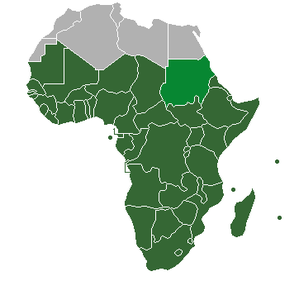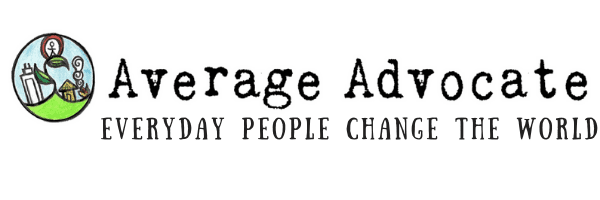Why should we care about AIDS?
 I was trying to figure out when I started caring about AIDS. I think I knew someone with AIDS briefly, as a kid, before he passed on. I definitely didn’t care about that person. But I’ve never really known someone with the disease. Most of us probably haven’t known someone with HIV. And when something isn’t personal to us, its hard to care.
I was trying to figure out when I started caring about AIDS. I think I knew someone with AIDS briefly, as a kid, before he passed on. I definitely didn’t care about that person. But I’ve never really known someone with the disease. Most of us probably haven’t known someone with HIV. And when something isn’t personal to us, its hard to care.
I guess I started caring about AIDS not because I actually cared about it. It was that I had found something I could do about it. I organized a few friends together and we packed a caregiver kits. Heck, it was something international for the poor, both things which I cared about. We wrote cards to these caregivers and their patients. It was cool. And after that, I started learning about it.
These are some of the things I learned: AIDS has been likened to the Black Plague because it has killed so many people. Just until recently it has seemed there is no way to control it. I learned that in some countries of Africa, a third of the population was HIV positive. I learned a lot of things that surprised me into caring. Here are some more of them-
What is AIDS/HIV?
AIDS stands for acquired immune deficiency syndrome. AIDS is really just the final stages of HIV, human immunodeficiency virus. This virus is transmitted through blood, sexual fluids and breast-milk. It can be passed through mother-to-child during birth, passed through sharing needles or blood, but it is usually contracted during sex. HIV can hide in your body a long time, or it can start appearing like other viruses would, like the flu. But the difference is that this virus doesn’t go away. It just gets worse. Meanwhile, it attacks the cells in the body that fight off disease and uses them to make HIV cells. Eventually, the body can’t fight off diseases anymore. This stage of HIV is referred to as AIDS. The most notable part of AIDS is that the body becomes so fragile, it cannot fight any outside sickness, or opportunistic infections (OI). These OIs are what actually kill the victims of AIDS.
passed through mother-to-child during birth, passed through sharing needles or blood, but it is usually contracted during sex. HIV can hide in your body a long time, or it can start appearing like other viruses would, like the flu. But the difference is that this virus doesn’t go away. It just gets worse. Meanwhile, it attacks the cells in the body that fight off disease and uses them to make HIV cells. Eventually, the body can’t fight off diseases anymore. This stage of HIV is referred to as AIDS. The most notable part of AIDS is that the body becomes so fragile, it cannot fight any outside sickness, or opportunistic infections (OI). These OIs are what actually kill the victims of AIDS.
When did AIDS become an issue?
It is actually NOT a myth that AIDS is believed to have originate from a type of chimpanzee in Western Africa. Scientist have no clue when it spread to humans. Just any time in the last few hundred years. The disease was discovered in the United States in 1981, although it obviously was not called that at the onset. Since then it has just spread exponentially. 30 million people worldwide have already died of the disease in the last thirty years. But the more individuals know about AIDS, especially if they are part of circles where HIV is prevalent, the less HIV spreads. The increase in education about AIDS has helped slow its growth in recent years. In the United States HIV has only spread minimally in comparison to other parts of the world.
Where is AIDS/HIV found?
 It is found everywhere. In the world as a whole there are about 34 million people living with HIV. A few years ago, in 2008, the 2 million people who died because of AIDS were replaced by 2.7 million more with HIV. This has been the trend.
It is found everywhere. In the world as a whole there are about 34 million people living with HIV. A few years ago, in 2008, the 2 million people who died because of AIDS were replaced by 2.7 million more with HIV. This has been the trend.
In the United States, there are about 1.1 million people infected with HIV; 20% of these individuals don’t even know they have it. Actually, only 60% of people in the world who have HIV realize they have it.
Although AIDS was first classified in the U.S.A., 97% of the HIV cases are in the poor world. That says something, right? Nearly 70% of the world’s victims of AIDS are in Sub-Sahara Africa, with the highest rates of HIV prevalence in the southern part of the continent. That is over 22 million people! Yet HIV is beginning to boom in Asia, and pockets are growing in Eastern Europe and Latin America.
Who are the victims of AIDS?
AIDS has created a trail of victims through every demographic and it affects men and women equally. Although there are 2.5 million children with HIV (almost 90% of them in Africa), many more children are affected by AIDS because it steals their security away. There are 16.6 million children who are missing one or both parents just because of the AIDS crisis. AIDS orphans are a subject all in their own category who need to be loved and cared for.
Overall, the reason I care about AIDS is that it ravages the poor. Most of those with HIV haven’t had access to education, prevention, care, and treatment to keep it from spreading or destroying their lives. It seems wrong to me that the people who already have it hard are hit with something worse.
“The HIV epidemic not only affects the health of individuals, it impacts households, communities, and the development and economic growth of nations. Many of the countries hardest hit by HIV also suffer from other infectious diseases, food insecurity, and other serious problems.” (AIDS.gov, 2011).
Of course, AIDS might just mean a tragic shortened life for a person, just like getting cancer can wreck havoc the same way. Yet AIDS has gone beyond being a tragedy similar to cancer because it does spread- it snowballs among the poor. And when a fourth of your whole country has a disease which keeps multiplying, how is your economy supposed to keep running? Especially when you already have little infrastructure and might not have access to clean water or food (let alone health care)?
Why does AIDS hurt people?
Well, its kinda obvious why HIV hurts people. But in addition to its prevelance and effect in poor countries, AIDS has a pretty high social stigma attached to it. In the last thirty years, its has been one of those things where Americans have believed that whomever has AIDS just got what was coming to them. This is largely because AIDS started among homosexuals, and in the United States about 50% of its cases are still among gay/bi- men. Yet, a stigma was birthed because it was associated with the moral failings of homosexuality, promiscuity and drug use (where the HIV spread through sharing needles). But the stigma has only hurt those who have it because of these “failings” and marginalized others who got HIV in other ways. This negative public opinion has kept people from getting tested, which in turn keeps them from being treated. And without treatment the virus continues to spread within the body while it gets passed on to others.
A negative stigma attached to AIDS is not unique to the United States, and seems to be even worse in Africa. There have been many myths attached to AIDS. Within the decade, in South Africa studies showed that in some places over 35% of men believed that if one had sex with a virgin they would be cured of HIV. Horrible, right? How many children and women have been raped and now have HIV now because of this myth? Yet the myth which has probably hurt the most is when people believe that just by being near an person who is HIV positive they will catch the virus. So many individuals have not had the care they have needed and been abandoned or in denial of their sickness because they do not want to be an outcast.
Who is working to stop AIDS and what is the good news?
Now this is the best! Just recently, AIDS has gone from being a tragic ever-spreading pandemic to being something we can have hope about. There is still no cure for AIDS, and who knows if there ever will be. Yet, the treatments for AIDS have been refined so that they are more affordable and actually make a difference. The treatment keeps people alive, keeps mothers from passing HIV to their children during childbirth or breast-feeding, and it actually is keeping HIV from spreading. This year researched unveiled that 96% of people on treatment will not spread the disease! We might not be able to cure AIDS, but we are beginning to make it stand-still. Bono has pretty much dedicated his life to making this happen:
Forty-cents a day might not seem like a lot. But, for the majority people in the world with HIV, this is not actually obtainable. They have to know their HIV status, be close enough medical care to receive it, have generous aid to donate the medication as they can’t afford. But, every year all these things are happening more and more because of the advocates pushing for this to happen. Just two years ago there were only 5.2 million people on HIV treatment; 4 million of which were in Sub-Sahara Africa. Last year this bumped up to 6.6 million on treatment. And this year the number of those who are receiving treatment is growing! But there are still millions and millions more who need this medication.
Wonderfully, the HIV prevalence among children has gone down 40% in the last ten year, but even so last year there were still 390, 000 cases of mother-to-child transmission which is something that should and can virtually be eliminated. Hence, the top priority is getting HIV medications to pregnant women and mothers so that by 2015 there will be a generation born free of AIDS, a major step in reversing the spread of AIDS (one of the goals of the world’s Millennium Development Goals- MDGs).
Pretty much, people are excited. Leaders on the front-lines of the AIDS battle are calling it the “Beginning of the End of AIDS” and global leaders are listening. Its amazing, actually. Something which has devastated whole sections of the globe is being reversed. Turned around. An AIDS free generation. Someday it will be E.L.I.M.I.N.A.T.E.D.
Action Ideas: What can you do?
I know I mentioned the caregiver kits, which I did through World Vision in as a small event we threw together.
 Become part of the organization ONE by following them on facebook, twitter, and signing up for their emails. ONE is such a large body of people, together what they do makes a difference. Mainly, they put pressure on leaders to put their money (less than 1% of our whole budget) where they have promised it already, for the MDGs. When this happens, people in the far corners of the world receive HIV treatment (which in turn stabilizes the region, which in general makes the world a better place).
Become part of the organization ONE by following them on facebook, twitter, and signing up for their emails. ONE is such a large body of people, together what they do makes a difference. Mainly, they put pressure on leaders to put their money (less than 1% of our whole budget) where they have promised it already, for the MDGs. When this happens, people in the far corners of the world receive HIV treatment (which in turn stabilizes the region, which in general makes the world a better place).
Keep a Child Alive has a great fundraising tool-kit.
You can do a Lemon:AID stand (read my review on this project here) for a great organization, Blood:Water mission who focus on both clean water and AIDS pandemic at the same time.
Buy a product (RED) gift for someone for Christmas. Or use a Starbucks RED gift card, for all your coffee purchases or buy RED coffee if you already frequent Starbucks. Or use the (RED) American Express credit card.
And, just for fun, make a graphic “quilt square” like mine to show your support and share it with all your friends, asking them if they know that it is the beginning of the end of AIDS.
At least it is the beginning of the end if we keep working together by loving, donating and advocating on behalf of the sick.
Learn more:
You can watch the current update from today with Bono, Alicia Keys, President Clinton, Bush, and Obama by clicking here.
If you haven’t yet, read my short story about what its like for a child to live in the world of HIV: World AIDS Day: Kefilwe’s Story.
Lastly, I thought this short movie was one of the better ones I have seen this week. It overviews AIDS transmission to children- where it started and where it will end:
References:
AIDS.gov (2011). http://aids.gov
World Vision Act:s. (2011). http://worldvisionacts.org/10_things_to_know_aids
United Nations. (2011). http://www.un.org/millenniumgoals/
http://www.thebody.com/content/art1111.html
Leclerc-Madlala, Suzanne. (2002). African Journal of AIDS Research. 1: 87-95. “On The Virgin Cleansing Myth: Gendered Bodies, AIDS and
Ethnomedicine.” Retrieved December 1st, 2011 from http://www.google.com/url?sa=t&rct=j&q=&esrc=s&source=web&cd=1&ved=0CC0QFjAA&url=http%3A%2F%2Fscnc.ukzn.ac.za%2Fdoc%2FHealth%2FAids%2FLeclercMadlala-S_Virgin_cleansing_myth_HIV-AIDS_ethnomedicine.pdf&ei=rvHXToGjJcTIgQeKsoWdDw&usg=AFQjCNFci0yh4nWXEFJUc3SfCBPfONwc3w










Trackbacks/Pingbacks